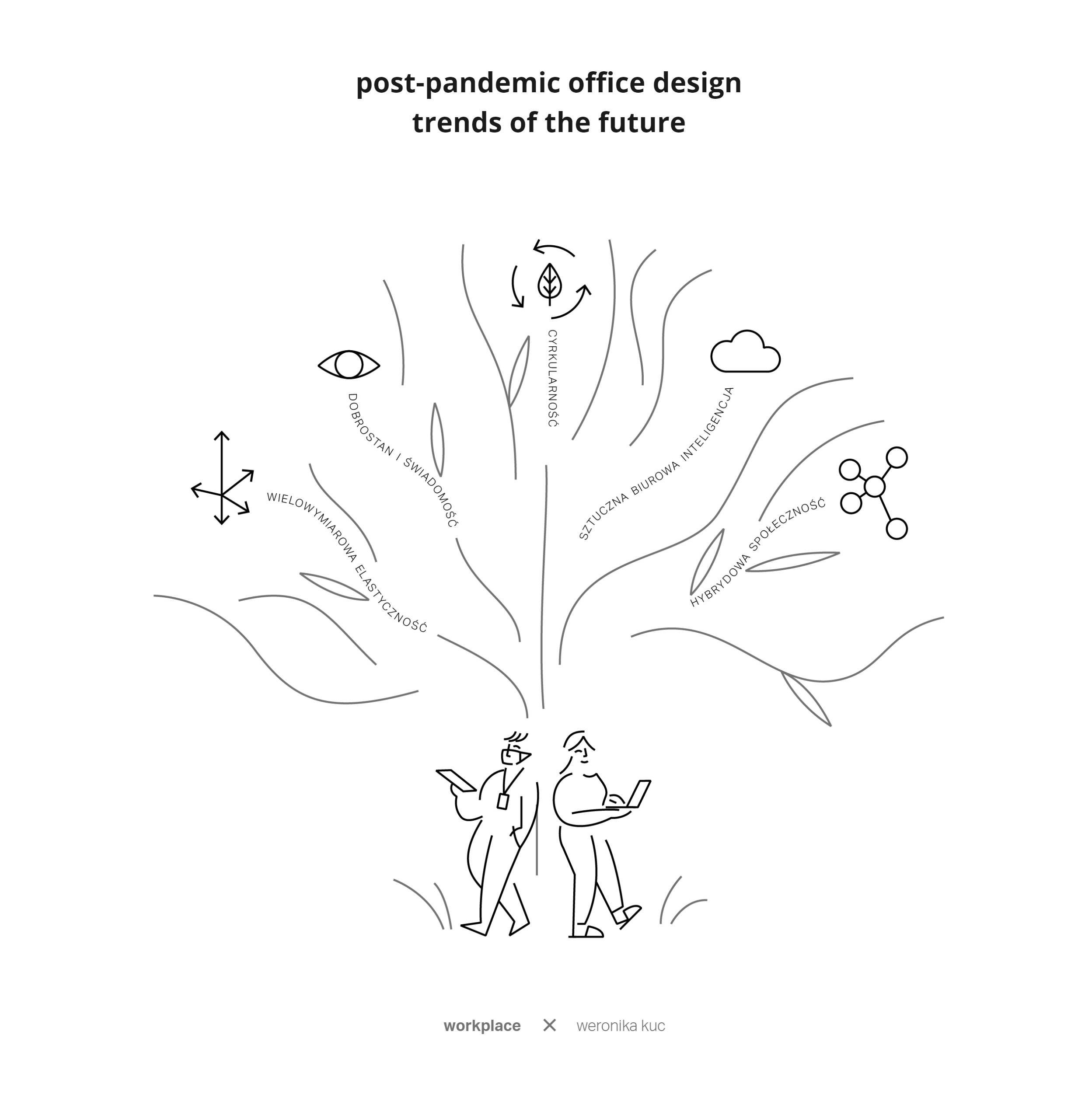
5 post-pandemic office design trends of the future | 2021
30.08.2021 / How do you approach office design, when you don’t know the company’s future work model? How do you build and maintain a competitive advantage in a post-pandemic world through your work environment? What will next-generation workers expect from their employers? See Workplace’s report on the offices of the future.
The Office of the Future Report was created in mid-2021, based on Workplace’s own research and experience, as well as research from a renowned UK firm Leesman. We also used the World Economic Forum’s “Future of Work” report, Unily’s report on designing sustainable spaces, and other reputed sources from the past 2 years.
What factors should organizations consider when designing work environments?
Trend 1. Multi-dimensional flexibility
These days, real estate market players love to use the word “flexibility”; flex solutions in workspaces have become crucial for business organizations. But what is “multidimensional flexibility”?
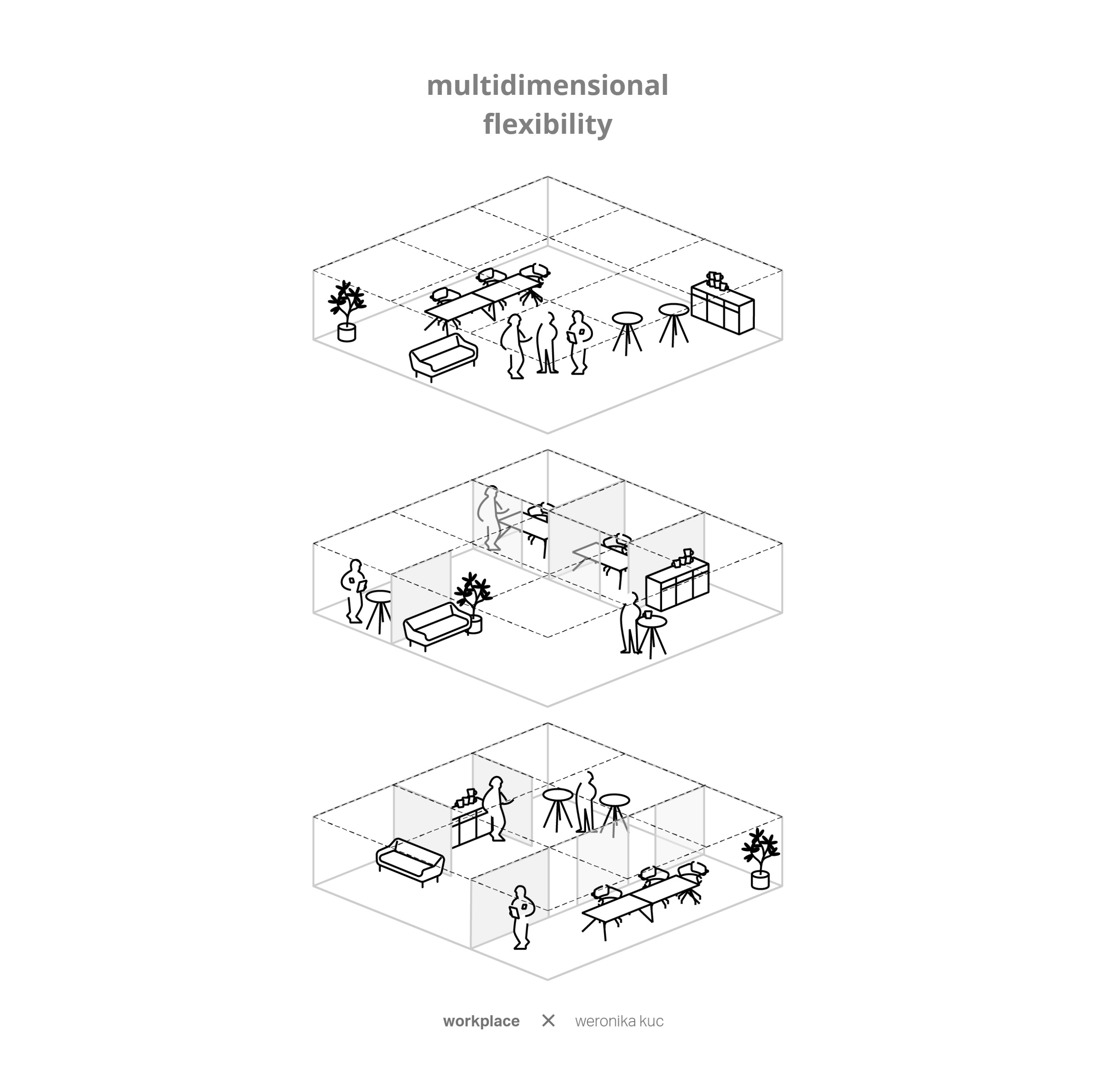
During a single year of the office’s operation, the structure of the company, the number of teams, their size, and the nature of work performed can change a number of times. The layout as we know it from the beginning of the millennium, consisting of corridors and rooms of different sizes, is slowly becoming obsolete. Subsequent iterations of this model evolved into a space in which walls diminished. Thus the open space was born and flourished. However, such work environments are not healthy either for the human body nor for its spirit. They focus more on the visual effect than on parameters that affect comfort and productivity, such as air, natural light, and the right amount of sensory stimuli such as sound, smell, and light. In the following years, the open space has earned the name ‘chicken farm’ and its hidden disadvantages have become destructive to the organization and the comfort of work. Even stunning design did not improve it.
However, multidimensional flexibility came to the rescue, reaching beyond the architecture and mobile interior design solutions of the headquarters. It encompassed the organization of work and the structure of the company processes, the technologies used, and even the satellite offices and coworking spaces used by the employees. Flexibility is understood differently and can serve different functions on different levels. It can be the ability to adapt physical space, to create an entire work environment ready for future generations of users and their diverse work styles, or an approach to building organizational processes in a hybrid world.
Also growing in popularity is the decentralized work model, in which the work environment ecosystem consists of not only the office, but also coworking spaces, satellite offices, hotels, and coffee shops. So what does multidimensional flexibility look like in practice?
Modular work zones
Appropriate variations of different module sizes and work zone arrangements must be designed early in the process. Before drawing a space plan, a grid of rooms must first be established for individual work, teamwork, and relationship building. It is all about preparing your organization for low-cost redesigns in the event of sudden changes.
Arrangement mobility
Furniture arrangements should be tailored to the individual needs of employees. How many times have you seen conference room chairs without casters? Remember that time when there was nowhere quiet to take a phone call or have a remote meeting? Did you have a sit/stand desk to help you maintain focus in case of an afternoon slump? A flexible office can meet such demands.
Organization of work
Simply using mobile solutions is not enough to call a space flexible. If users are not aware of what works for them, they will not be able to properly use mobile furniture, rearrange it, or adjust it to their preferences. It is critical to teach employees how to use technology and use solutions that support onboarding.
Decentralization
Teams can shrink and grow rapidly. Coworking spaces and satellite offices are the answer to the challenges of such fluctuations. An organization can decide on renting 70% of space long-term and 30% in coworking and flexible offices. However, the greater the percentage of remote employees, the greater the challenge related to data confidentiality, space adaptation, or the building standard. The challenges also include building an organizational culture or efficient internal communication. The research we conducted for TDJ Estate shows that awareness of what coworking is and what it offers is very low in regional cities. Small and medium-sized business owners are very pragmatic and prefer to rent apartments or even entire houses. On the other hand, corporations are afraid of losing privacy and data security.
Trend 2. Well-being and awareness
Long-term stress and its negative effects, both physical and mental, should motivate every developer and designer of commercial real estate to care for the well-being of employees. Many employers are beginning to take the phenomenon among employees seriously, as can be observed in many offices. As a result, in the future corporations will definitely put more emphasis on wellbeing and the actual impact of space on the health of its users than on the “wow effect” caused, for example, by the stunning design, multiple colors and other stimuli, or the latest technological solutions.
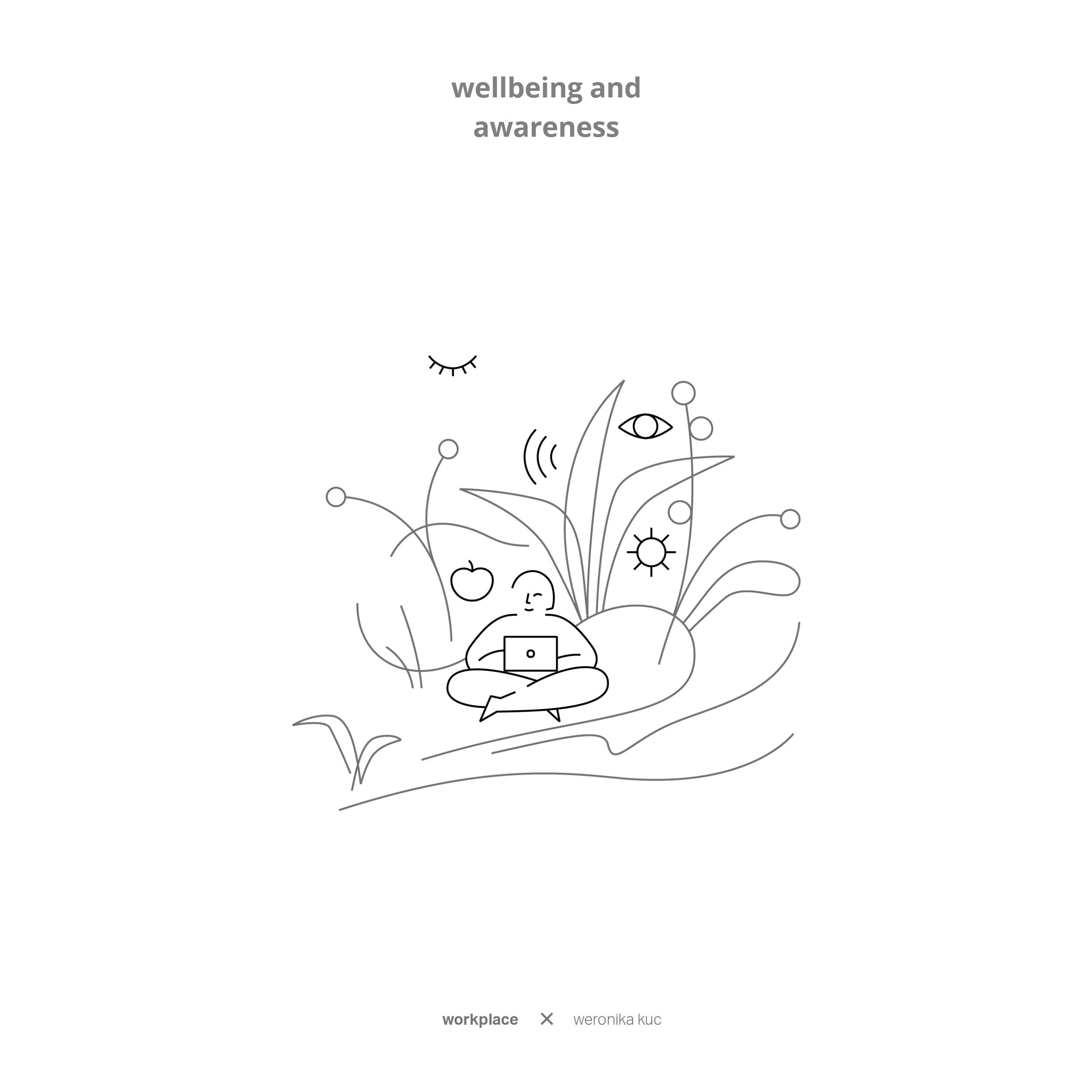
Moreover, offices are often built with cheap and often harmful materials. That’s why a sustainable approach to design is so important; the ‘new normal’ is based on circularity.
Trend 3. Circularity
The pandemic and the changes it has brought about are dubbed the black swan – an unforeseen phenomenon that changes previous paradigms. But the real challenge for us is the approaching “gray rhinoceros”: the highly probable and highly significant, yet neglected threat of the climate crisis.
Offices are built with the cheapest and often harmful materials, and office space equipment still has a linear life cycle. In addition, most interior designs are replaced after an average of 5 years of lease. It is estimated that every year more than 8.5 million pieces of office waste end up in landfills in just the United States alone. Additionally, low awareness and motivation to change are alarming in the office sector.
But generations entering the workforce and an increasingly conscious community of current employees expect environmental responsibility. Our designers began to increase their knowledge of climate risks and educate our clients a few years ago. The next natural step was the desire to solve design problems in a circular model. After all, it is not just about the waste we generate as office building users. The challenge itself, then, is to design such universal and timeless solutions that will stand the test of time and accommodate the needs of different industries and audiences.
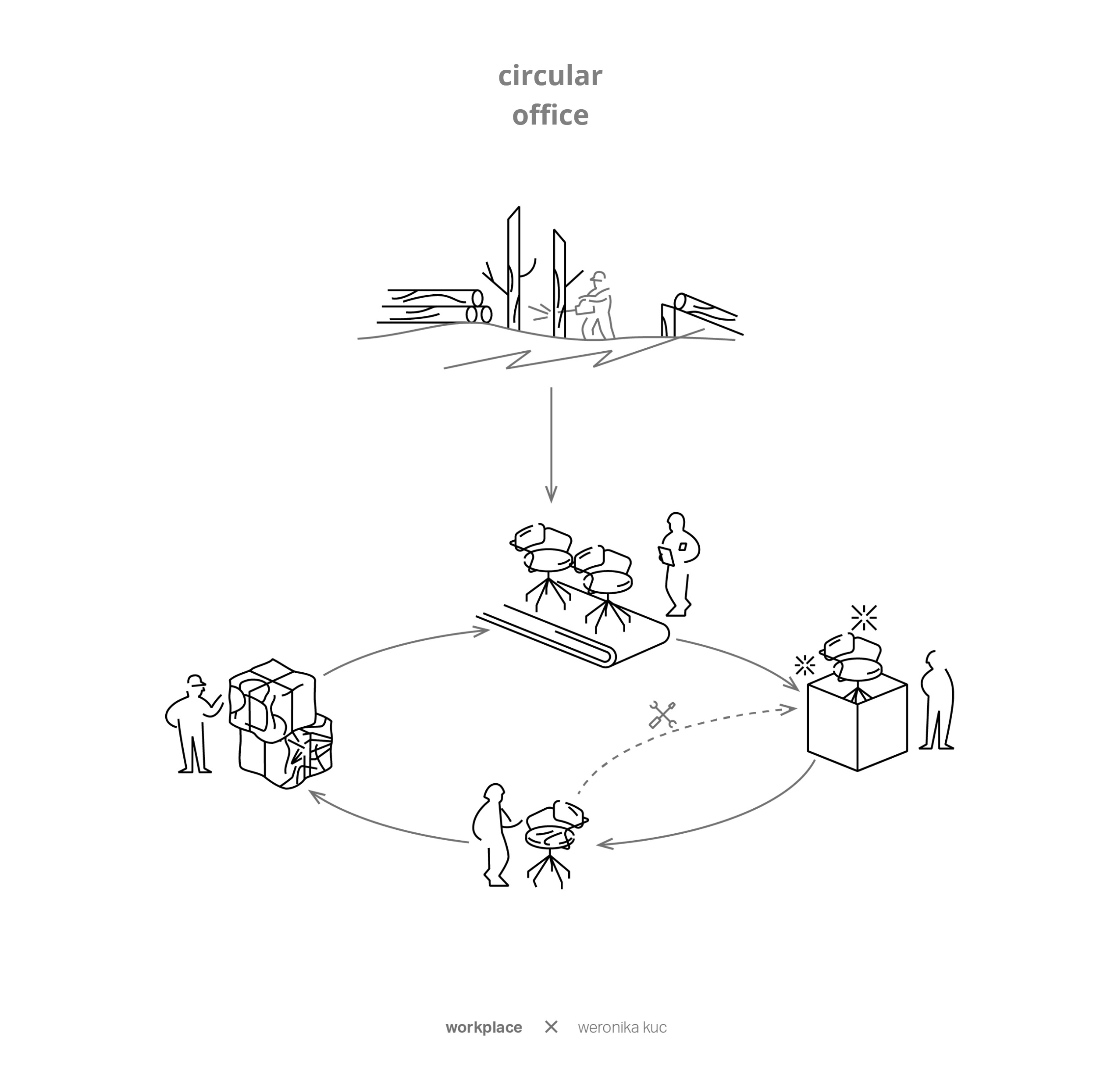
The implementation of the circular economy should be guided by the idea of less waste, which is to reduce the environmental impact of new office projects as much as possible. The word “less” is not accidental, since there are currently no widely available furniture and construction solutions that can be defined as zero waste. In addition, regulations, or rather the lack thereof, are the biggest barrier to projects with a reduced or zero environmental footprint. Current legal and construction regulations hardly support the use of environmentally friendly solutions, energy-saving materials, or recycled products.
Trend 4. Artificial (Office) Intelligence
Before the pandemic, the level of utilization of office space was typically less than 50%. Will the index improve after the pandemic? Organizations still don’t know how many people will work on-site, and how often. A shifting work environment cannot be managed manually or by using simplistic software.
Artificial intelligence in the real estate industry is a new sector. However, there is no denying that this is one of the key trends shaping modern offices. Managing entire buildings, individual office spaces, and the community that uses them is getting smarter: interactive offices, adaptable space, or a digital work environment assistants are already here. According to our research, and based on the experience of our friendly prop-tech industry expert Bartek Dobrowolski, there is still room in the market for a good solution that integrates intelligent office management systems.
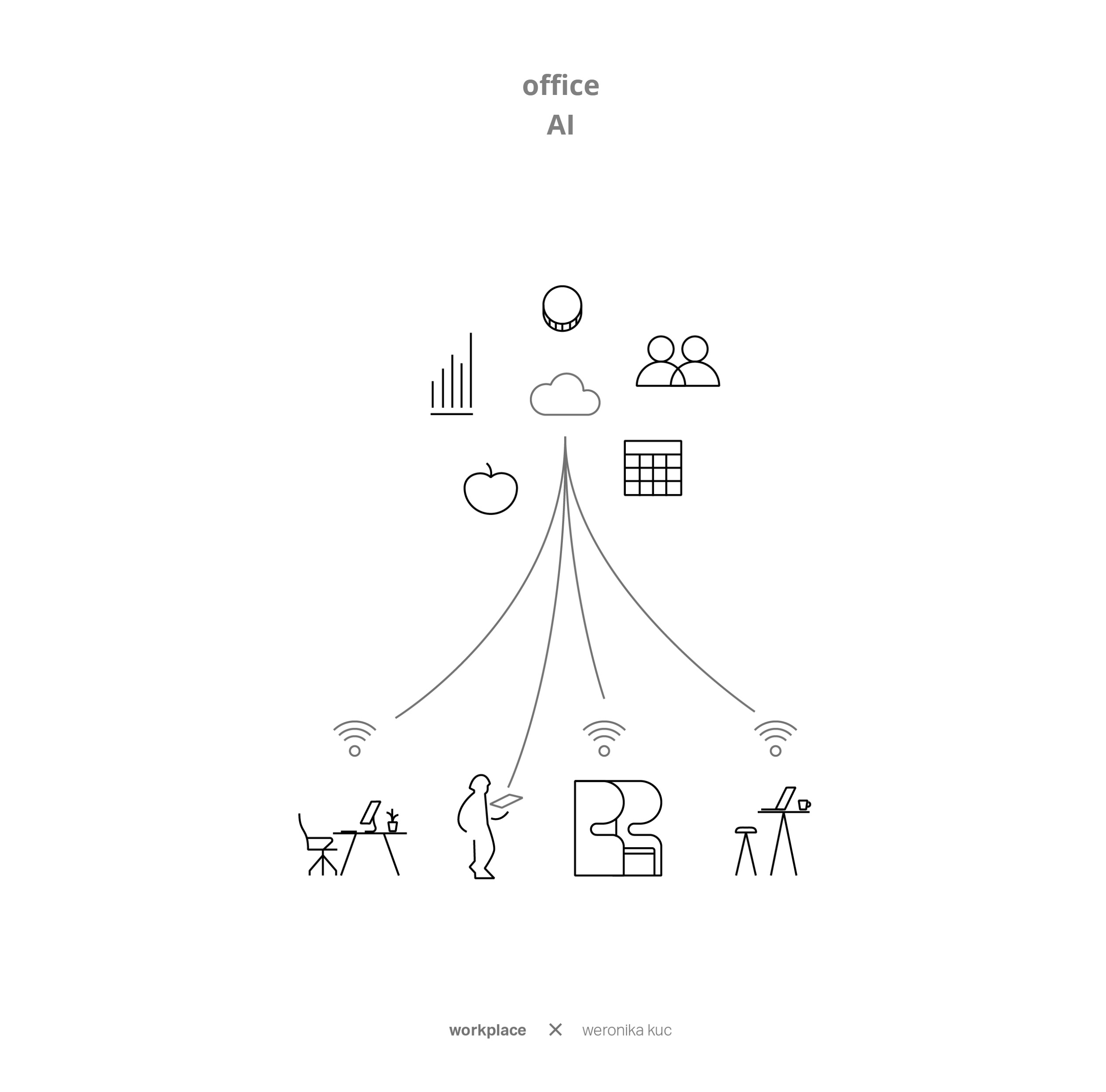
Some solutions available on the market have already earned a reputation, although they are still being developed. For example, the Polish platforms SpaceOS or Zonifero offer booking desks, meeting rooms, or parking space via app. You can also use them to contact maintenance and order food from a local restaurant to avoid queueing. There are at least ten similar apps available worldwide.
Organizations can also study space utilization using sensor platforms Disruptive Technologies and Verge Sense, and analyze them in-depth using an aggregating platform Infogrid. The cost of this type of solution starts at 10% of the annual cost of renting an office with equipment. In our opinion, such an investment can quickly pay off as space utilization improves. In addition, users save time not having to search for optimal space for some activity they have in mind.
Trend 5. Hybrid community
The shift to a hybrid work model has loosened the bonds between employees and weakened the sense of affiliation among them. Morale has dropped, which has resulted in a significantly increased turnover. Companies have reached out to foreign talent, as remote work opens access to specialists from the global market.
The results of Workplace’s own research, as well as of research projects with Leesman, show that employees confirm better performance when working remotely. However, they recognize the looming burnout and frustration of being isolated and having to work in a hybrid mode, as there is often a lack of policies to support work organization or a culture of communication.
A key aspect in building a hybrid work culture is understanding the needs and concerns communicated by employees. These are seemingly full of contradictions. Some, working from home, have experienced more freedom to organize their work with flexible working hours and they have become more efficient. Their focus is better at home and they don’t want to go back to the office. On the other hand, in the office, it is easier to quickly discuss a problem or to brainstorm, or simply just chat with colleagues, and feel part of the “team” over coffee.
Therefore, building a hybrid community becomes a major challenge. The process should accommodate diverse preferences, the need for flexibility and mobility, and democratic access to information within the organization. The identity of a corporate community will not emerge from chaos. It requires the joint effort of all individuals and teams.
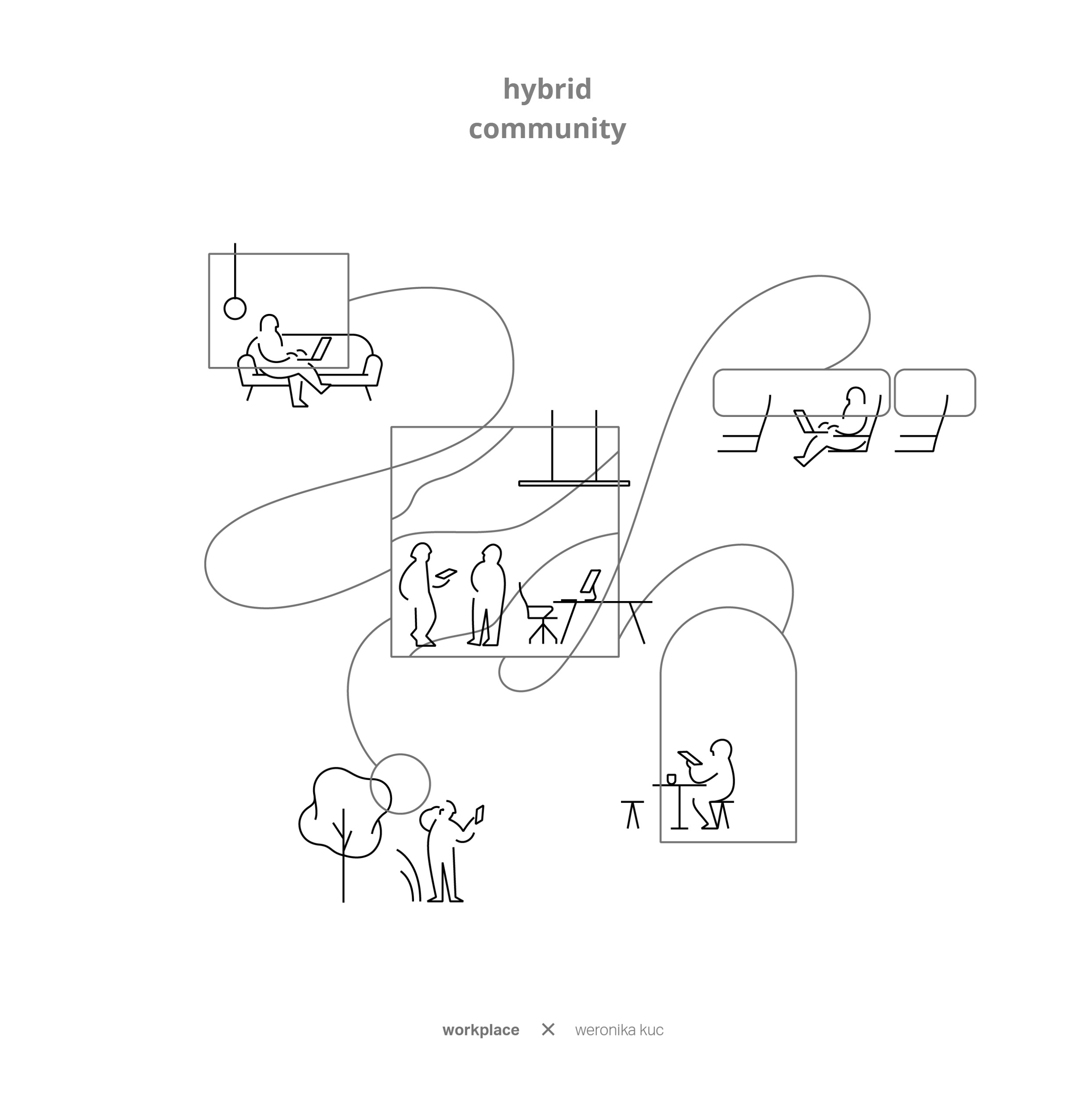
Think before packing to move!
Communication exclusion, disrupted exchange of information and collaboration, and above all, lack of face-to-face contact with colleagues are very serious drawbacks of remote work. Therefore, companies are trying to reorganize their work model. Some have already optimized their space, while others are just planning the move, hoping for big savings.
However, before you make a top-down decision to downsize your office floor, consider your work environment strategy. Two questions are in order at the outset:
- Does the organization have the ability to build a #remotefirst environment, or does it rely on #officefirst because of the way it is managed?
- How much leeway does the company give employees in deciding to return to the office?
Organizations should decide how much they want to build a company identity and culture in the physical office space, where teams exchange knowledge and enjoy spontaneous meetings, and the freedom of live interaction. For offices to be fully ready for the unknown future, they need a flexible work environment.
#design #future office #work environment



